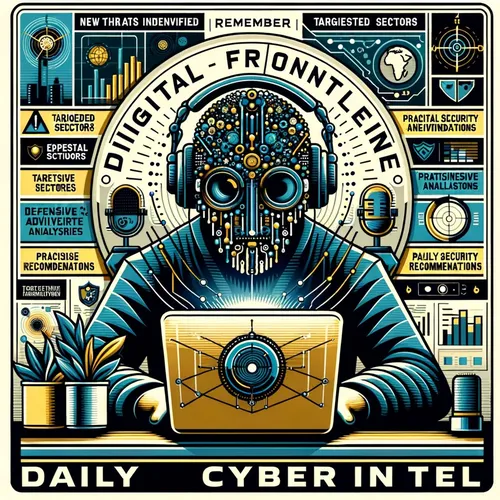China's Cyber Ninjas Strike Again: Murky Panda's Cloud Rampage and the Charon Ransomware Twist
- Author
- Quiet. Please
- Published
- Fri 22 Aug 2025
- Episode Link
- https://www.spreaker.com/episode/china-s-cyber-ninjas-strike-again-murky-panda-s-cloud-rampage-and-the-charon-ransomware-twist--67482349
This is your Digital Frontline: Daily China Cyber Intel podcast.
Listeners, Ting here on Digital Frontline: Daily China Cyber Intel, slicing straight into today’s cyber action—let’s skip the pleasantries and drill down. The past 24 hours have seen an absolute flurry from our favorite frenemy: China-linked threat actors. If you’re in the cloud or running anything with “as-a-Service” in your title, grab a fresh coffee, because things are getting serious.
Let’s talk about Murky Panda, better known in some l33t circles as Silk Typhoon. CrowdStrike’s fresh-off-the-press Threat Hunting Report highlights a mind-bending 136% surge in cloud intrusions, with a hefty chunk traced to these China-nexus wizards. Their specialty? Ripping open zero-day flaws—think Citrix NetScaler’s CVE-2023-3519 or Commvault’s CVE-2025-3928—and slipping into internet-facing appliances like a ninja with a malware katana. Murky Panda loves webshells; neo-reGeorg is their flavor of the week, but the real party trick is their CloudedHope custom Linux malware that brings remote access with style.
What’s alarming isn’t just their old-school persistence—it’s how they’re leapfrogging cloud accounts using trusted relationships. According to Adam Meyers at CrowdStrike, these attackers have developed a knack for abusing Entra ID service principals and delegated privileges. In one documented case, Silk Typhoon compromised a SaaS provider's app registration secret, effectively letting them hopscotch into downstream customer environments like a cyber cat burglar. Targeted sectors? Government, technology, academia, legal, and pro services—so if you have data or credentials worth stealing, you’re absolutely in the crosshairs.
Beyond pure espionage, hybrid tactics are trending. CYFIRMA just sounded the alarm about the Charon ransomware, which sports all the fingerprints of Chinese APTs—think PlugX and HUI Loader, those classic state-level espionage tools, blended for extortion and exfiltration. Even though Charon just clocked in a hit on a Middle Eastern aviation group, American businesses should be on guard for this shift—blurring the line between espionage and good old-fashioned cyber heist.
So, what do the experts recommend? First, patch like your reputation depends on it. Prioritize internet-facing devices—don’t be the soft target. If it’s Citrix or Commvault, compare your patch status with the latest advisories. Two, enable tight monitoring for suspicious lateral motion, especially in cloud environments—watch for new or altered credentials and app registrations. Multi-factor everywhere, and seriously consider restricting delegated permissions wherever possible.
Finally, here’s some tough love from the Defense Counterintelligence and Security Agency’s David Cattler: treat your supply chain as strategic cyber terrain, because adversaries like China absolutely do. Your policies need to evolve as fast as attackers do—AI-driven phishing, doxing, and even deepfake-generated documents are already in play.
All right, listeners, thanks for tuning in to Digital Frontline: Daily China Cyber Intel with Ting. Don’t forget to subscribe for your daily dose of threat intel and survivor wisdom. This has been a quiet please production, for more check out quiet please dot ai.
For more http://www.quietplease.ai
Get the best deals https://amzn.to/3ODvOta
